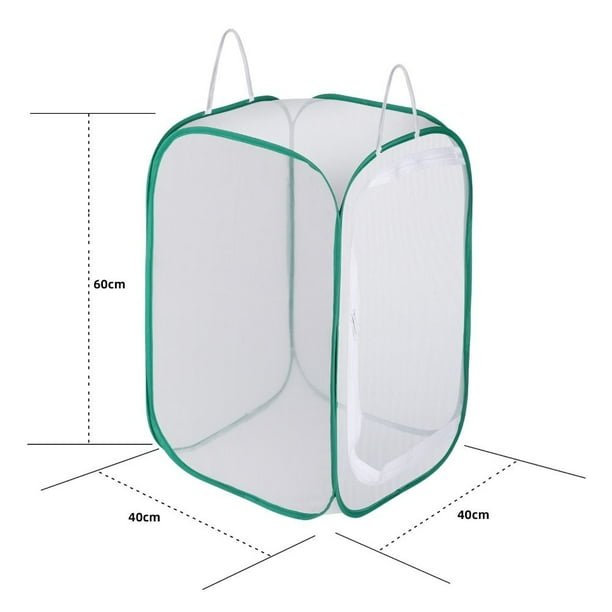
Silkworms, especially the *Bombyx mori*, are not just interesting to observe; they also teach valuable lessons in biology, ecology, and sustainability. But their well-being largely depends on how you house them. From basic habitats to more elaborate setups, let’s dive into what makes a great silkworm enclosure. We’ll explore options perfect for classrooms and small-scale enthusiasts, ensuring your silkworms have the best chance to flourish.
Why Choose Silkworms for Educational Projects?
Silkworms are one of nature’s wonders. They’re not just a fun experiment; they offer a hands-on way to learn about life cycles, nutrition, and even economic history (after all, silk production dates back thousands of years). Here are a few reasons why silkworms are perfect for schools and hobbyists:
- Simple Care Requirements: Silkworms are relatively easy to care for. They primarily eat mulberry leaves, and their needs are straightforward compared to other pets.
- Quick Life Cycle: Silkworms progress from eggs to caterpillars to cocoons in just a few weeks. This fast-paced life cycle allows for immediate observation and learning.
- Engagement: Watching silkworms grow and eventually spin silk can captivate students’ imaginations and spark interest in science.
The revealing journey from egg to silk offers plenty of teachable moments. Plus, once you’ve set up your enclosure correctly, maintaining it can become a fun project for children and adults alike.
Essential Features of a Silkworm Enclosure
Creating the ideal enclosure for your silkworms involves more than just a box. Here are some key features to consider:
Size and Space
The size of your enclosure depends on how many silkworms you plan to raise. A small box can work for a few, but if you’re thinking bigger, a larger container or even a dedicated tank might be more appropriate. As a general rule, aim for at least 1 square foot of space for every 100 silkworms. This allows enough room to grow, eat, and spin without crowding.
Ventilation
Silkworms need fresh air, so proper ventilation is crucial. Look for an enclosure that has plenty of holes or mesh screens. This setup not only helps with airflow but also keeps unwanted pests out. You wouldn’t want a friendly fly disrupting their cozy silk-making, right?
Temperature and Humidity Control
Keeping the environment just right is key. Silkworms thrive best at temperatures between 70°F and 80°F (21°C to 27°C). If your home or classroom tends to get a bit cooler or hotter, consider using a heater or fan to maintain those ideal conditions. A simple hygrometer can help you monitor humidity levels, ensuring the enclosure isn’t too dry or too humid.
Types of Enclosures for Silkworms
Now that you know the features to consider, let’s explore some popular types of enclosures suitable for schools and hobbyists.
Plastic Storage Containers
Plastic storage containers are a popular choice for many reasons. They’re affordable, easy to find, and typically come in various sizes. You can easily customize them—cutting holes for ventilation and adding shelves for your silkworms to climb. The clear walls also allow for easy observation of your little silk-spinners.
Aquariums
If you’re looking for something a bit more durable, aquariums make excellent enclosures. They provide a spacious environment and are easier to clean than many other options. Just remember to create proper ventilation, as aquariums often come with tight-fitting lids.
Commercial Insect Habitat Kits
For those who want a ready-made solution, many companies offer insect habitat kits specifically designed for silkworms. These kits usually include everything you need: a properly ventilated enclosure, feeding trays, and sometimes even substrate. This option simplifies the process, especially for beginners who may be unsure about setting up from scratch.
Setting Up Your Silkworm Enclosure
Once you’ve chosen your enclosure, it’s time to set it up. Here’s how to get started:
Gather Your Supplies
You’ll need a few essentials to create a functional habitat:
- Mulberry Leaves: Fresh leaves are a must. They are the primary food source for your silkworms.
- Feeding Trays: Shallow trays can help hold the leaves in place and keep the enclosure tidy.
- Moisture and Hygrometer: Maintain humidity levels with a small water dish and check with a hygrometer.
Arrange Your Enclosure
Start by placing the feeding trays at the bottom of the enclosure. Then, make sure there’s enough space for your silkworms to move around. You can add crumpled paper as a substrate for them to crawl on. Just avoid using newspaper since the ink can be harmful.
Monitoring and Maintenance
Regularly check on your silkworms to ensure they’re eating and growing. Replace the leaves daily and clean the enclosure weekly to prevent mold and odors. Keep an eye on their health—if you notice any discolored or inactive worms, it might be a sign that something needs adjusting in their environment.
Common Challenges and Solutions
Every hobby has its bumps in the road, and silkworm raising is no different. Here are some common challenges and how to tackle them:
Pests
Pests can be a problem, especially if your enclosure isn’t well-ventilated or clean. If you find unwanted visitors, remove them immediately and clean the enclosure thoroughly. Consider using more secure lids or mesh coverings to keep pests out while allowing for airflow.
Feeding Issues
Sometimes your silkworms might refuse to eat. This can happen if the leaves are not fresh enough or if they’re stressed due to environmental factors. Always provide fresh mulberry leaves and maintain a consistent temperature to keep your silkworms happy and munching.
Overcrowding
If you notice your silkworms getting sluggish or sluggishly navigating their space, it might be a sign of overcrowding. If they’re in a small enclosure, consider separating them into larger ones or fewer silkworms in each container.
Why Silkworm Enclosures Matter for Education
Silkworm-friendly enclosures aren’t just practical; they serve an educational purpose. For students, setting up these habitats promotes critical thinking and responsibility. You might ask: how does this relate to larger ecological concepts? Well, these projects not only teach students about the life cycle of silkworms but also expose them to ideas of sustainability and biodiversity.
Enclosing silkworms well ensures their well-being, directly impacting learning outcomes. The more comfortable their environment, the more curious and engaged students will be.
In conclusion, setting up a silkworm-friendly enclosure is a fun and educational project for schools and hobbyists alike. It’s an opportunity to delve into the wonders of nature and witness the magic of silk production firsthand. With a bit of planning and care, your silkworm enclosure can become a thriving ecosystem that sparks curiosity and inspires learning in a hands-on way. So, roll up your sleeves, gather your materials, and get ready to create an engaging habitat for these fascinating creatures!

